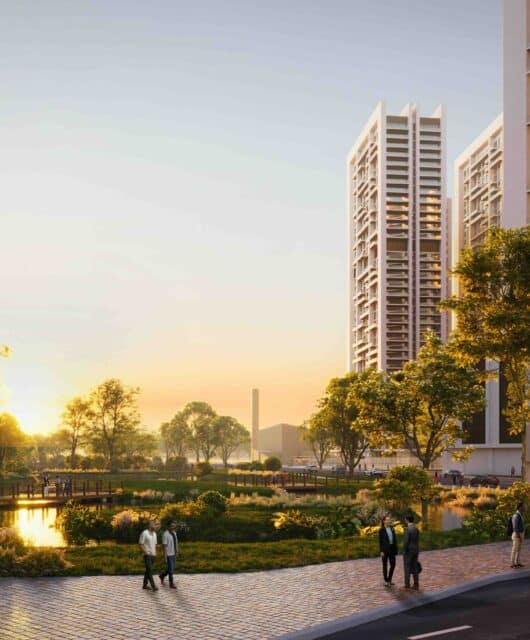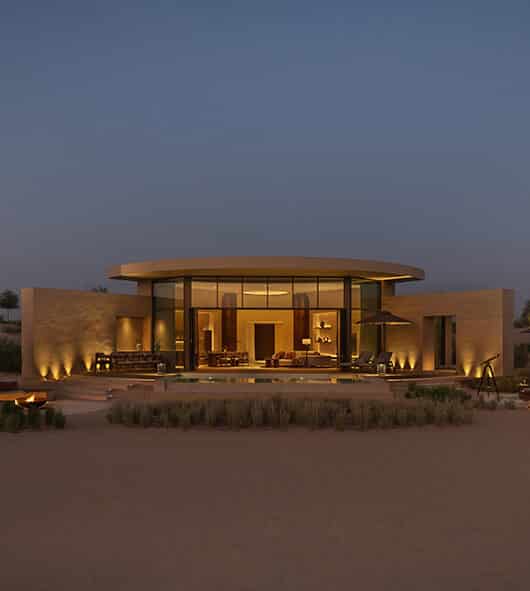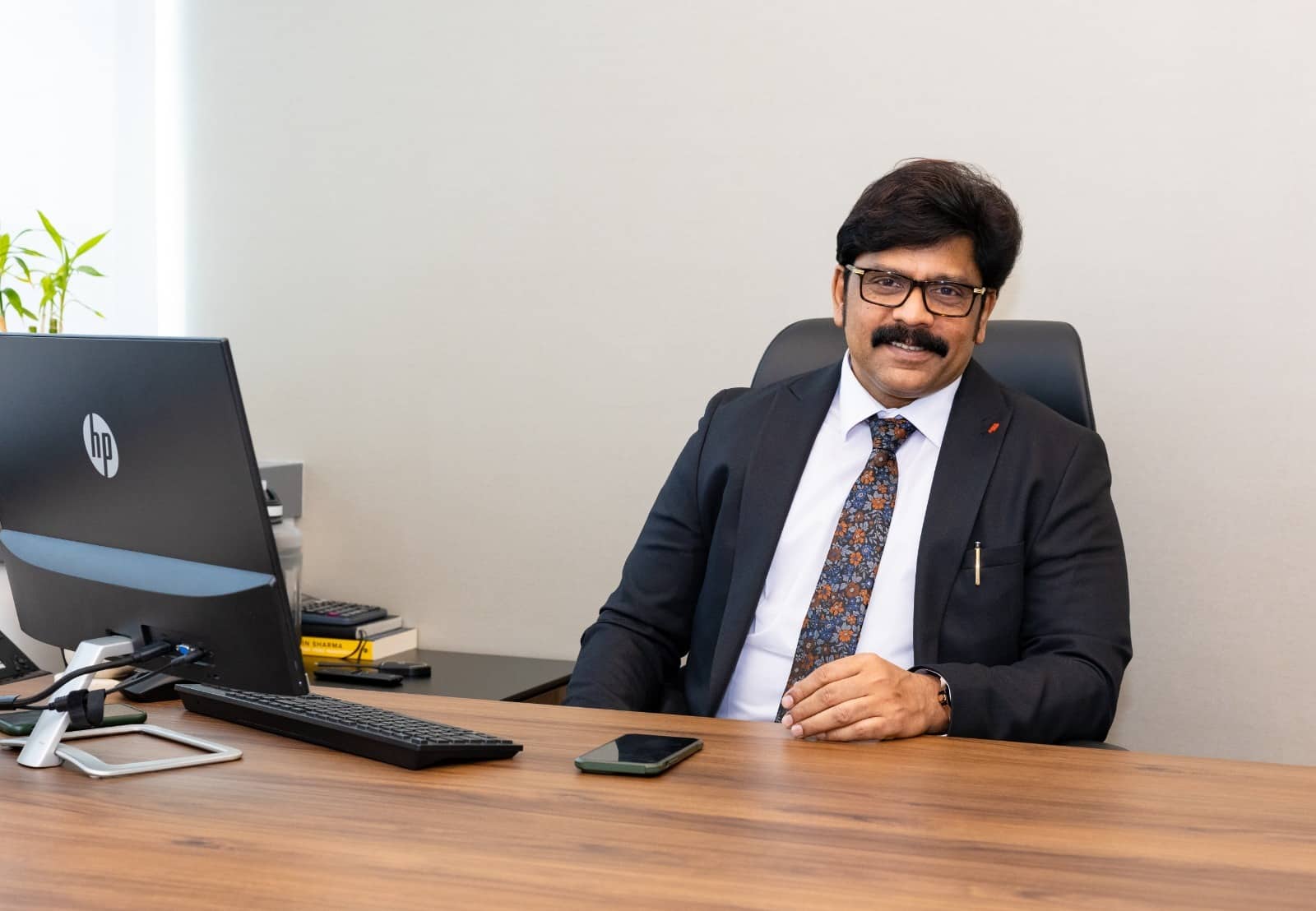Jewel of the Desert
It’s admirable to see the dedication and the conditions given to the youth in Saudi Arabia,” says Design Days Dubai fair director Cyril Zammit. “Not only are the beauty and scale of the building noteworthy, but so is its ambition to be a new point of convergence for culture at large. I have met the management and was impressed by their vision and their goals.”
Emerging out of the rubble and dust of Dhahran, just north of the King Fahd Causeway that links the kingdom to Bahrain, is a 100-kilometre-square cultural centre – a bold Saudi Aramco initiative. Designed by Norwegian architecture firm Snøhetta, the facility, which stands starkly apart from the region’s usual glass architecture, will promote cultural development within the country through its many facilities, set to include a library, auditorium, cinema, museum, archive and exhibition spaces.
Due for completion later this year, the facility was the subject of a design competition back in 2007 that ultimately saw Snøhetta win the contract with a conceptual design that proposed the convergence of five pebble-shaped structures, leaning on one another yet resting in various directions.
“The past is the part that’s under the ground, while the present is the very generous lobby where everything comes together”
The design team wanted to create something that would represent the country’s heritage and development, that stood as a statement of history and hope.
“It’s a pretty free-flowing environment here at Snøhetta, so there were a lot of individual concepts, but the biggest one that was intuitively understood was this division between past, present and future,” says Tae Young Yoon, a senior architect at Snøhetta who oversaw the project. “That was very evident in how the project was organised in sections.
“The past is the part that’s under the ground, while the present is the very generous lobby where everything comes together. And as you move up, it’s more about the future,” he adds, referring to the 98m Knowledge Tower, which aptly houses the library.
Literary inspiration
Another concept that indirectly fuelled the team’s creativity was, Yoon says, that of an arch, inspired by the writing of Italian author and journalist Italo Calvino in which he referenced the Roman arch’s keystone – the piece that holds it all together. “It’s where all the force is transferred,” Yoon says. “It’s the one piece that allows the integrity of the whole. So even though the building looks like a stack of stones, it is, conceptually, an arch for us.”
Guided by these two principles, Snøhetta further approached the architecture and interior using a number of design philosophies, such as energy, teamwork and the distinction between the extrovert and introvert, which heavily influenced the make-up of the exterior and interior respectively.
The project’s façade is made of 360 kilometres of thin stainless steel pipe wrapped around the centre’s five ‘pebbles’ and is set above a Kalzip metal skin. The centre’s exterior has a uniform design that communicates connectedness. Even though we see five independent structures, they lean on one another and their singular appearance
illustrates a familial link, while the size and direction of each offers variance. “The exterior, or the extrovert, is heroic, I guess, without intending to be,” says Yoon. “It conveys iconic unity that’s interesting to look at.”
The interior is different. Each space has its own identity, to be interpreted via the varying material choices throughout the centre. And because multiple spaces can be housed within the same pebble, the message is that while they are wholly separate from each other, they belong to the same group.
Though each space is unique, the use of perforated metal and rich palettes throughout is frequent. Patterns too, inspired by Middle Eastern geometry, can be found in subtle amounts. The library, for example, has an inner skin of identical steel panels with double curvature that are designed to overlap. “Some of the richest patterns are in the library,” Yoon says. “We were inspired by the richness of Arabian mosaics, without being too literal about it. There are many examples of this throughout. The complexity of geometric articulation is something we all took inspiration from, again not literally, but the expressiveness of it.”
Geometric patterns can also be found in the interior’s architectural lighting, most evident in the lobby, in which piercing slivers of light zigzag across the ceiling, as well as in the exterior interface that separates the building from the landscaped gardens outside – inspired by Saudi’s geology, and arid lands across the world.
Other materials used for the interior of the project include bamboo and the Kvadrat-covered acoustic fabric panels by Norwegian artist Heidi Winge Strøm in the auditorium, and the Zumtobel-made chandeliers that hang in the great exhibition hall.
A hub for the arts
When complete, the project will host a number of cultural events, from opera and symphony concerts in the 930-seat auditorium to musicals and lectures, while the smaller cinema will offer a new venue for performing arts in the kingdom. Up in Knowledge Tower, the library (set to contain 200,000 books) will be accessible for users of all ages and interests, and travelling exhibitions will rotate throughout the great exhibition hall. It’s an audacious programme, one that will foster education and cultural dialogue.
Extending its generous ambitions to its community, the centre (and therefore Saudi Aramco) will also be supporting Saudi Design Week at this year’s Design Days Dubai. In 2016, the exhibition introduced a number of Saudi designers, including Wadha Al Rashid, Oelab, Ayah Al Bitar, Noura Bouzo and Misque. Together, they explored the notions of reinventing and reinterpreting heritage by showcasing everyday objects.
“When Saudi Design Week presented emerging Saudi designers last March at Design Days Dubai, it was the result of a great cooperation that started back in 2014,” says Zammit. “Between the two countries, there has always been a natural link when it comes to design. In 2017, some of the designers will be showcasing independently at Design Days, a new step for a rapidly growing market.”
While the construction team finalises the last details of the cultural centre, the Snøhetta team is back in Oslo. Although they’ve recently skirted away from controversy for having delivered work in the kingdom, they’ve continued towards their mission of addressing problems through architecture and design. And they’ve taken on a number of new developments, including another Saudi project.
“We have a metro station in Riyadh going up,” says Yoon. “It’s going to be on a par with this project. It’ll be amazing.







